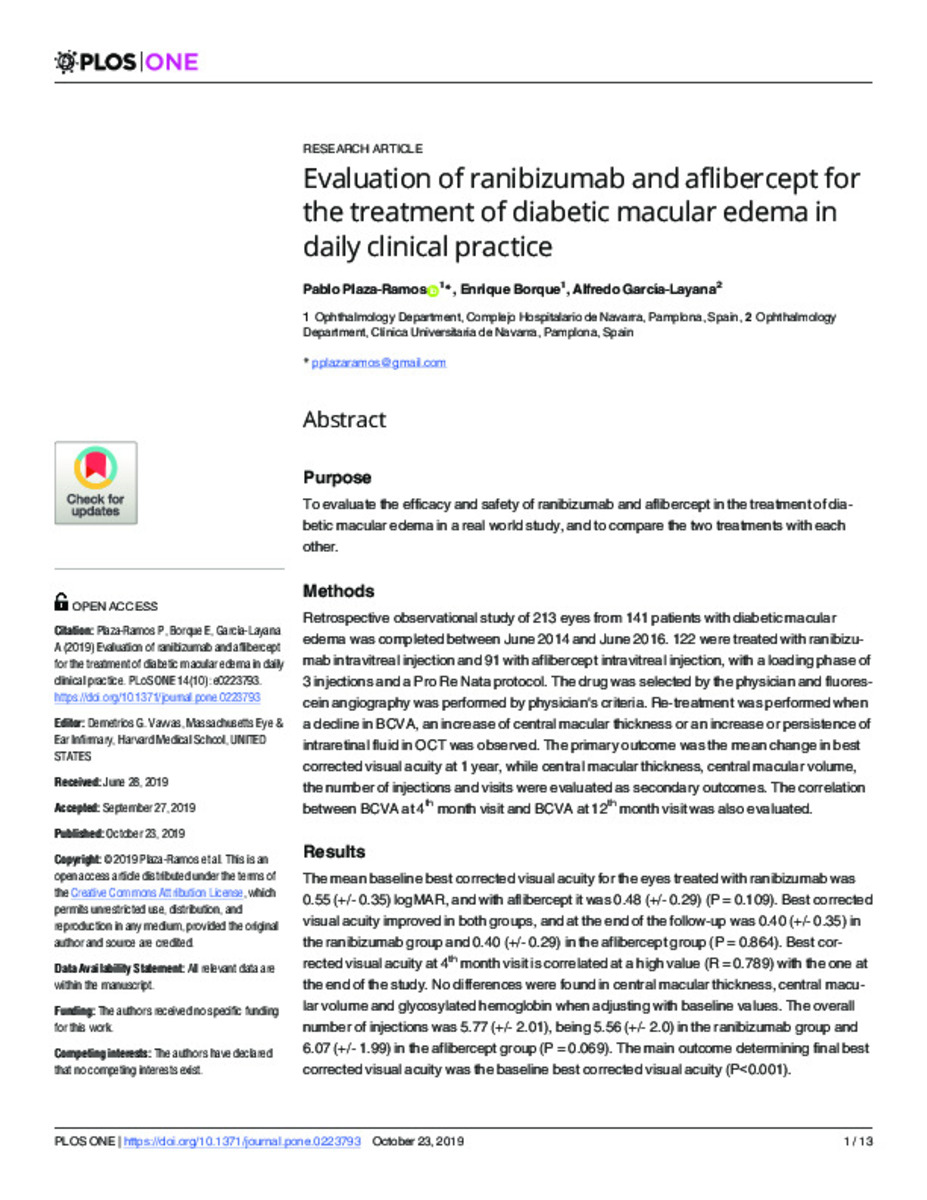Evaluation of ranibizumab and aflibercept for the treatment of diabetic macular edema in daily clinical practice
Palabras clave :
Ranibizumab
Aflibercept
Diabetic macular edema
Fecha de publicación :
2019
Editorial :
Public Library of Science (PLoS)
Nota:
This is an
open access article distributed under the terms of
the Creative Commons Attribution License, which
permits unrestricted use, distribution, and
reproduction in any medium, provided the original
author and source are credited.
Cita:
Plaza-Ramos, P. (Pablo); Borque-Rodríguez-Maimón, E. (Enrique); Garcia-Layana, A. (Alfredo). "Evaluation of ranibizumab and aflibercept for the treatment of diabetic macular edema in daily clinical practice". PLOS ONE. 14 (10), 2019, e0223793
Aparece en las colecciones:
Estadísticas e impacto
0 citas en

Los ítems de Dadun están protegidos por copyright, con todos los derechos reservados, a menos que se indique lo contrario.









